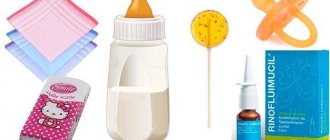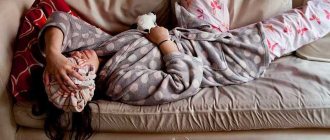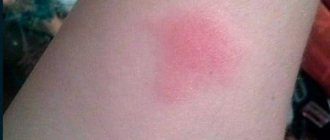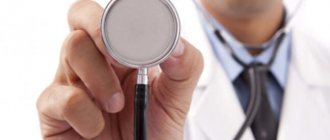What is a cold
Runny nose, cough, increased body temperature are symptoms of a disease resulting from severe hypothermia, decreased performance of the immune system, and hypovitaminosis. People call the disease a cold, but doctors diagnose similar conditions as ARVI (acute respiratory viral infection) or acute respiratory disease (acute respiratory disease).
The cause of the development of infection is pathogenic microorganisms that, through the air or otherwise, enter the mucous membranes of the respiratory tract (mouth or nose), where they begin to actively multiply, penetrating further into the body and provoking inflammation. Scientists count more than 200 types of respiratory viruses, among which parainfluenza, adenoviruses, rhinoviruses, enterovirus, and human respiratory syncytial virus have become particularly widespread.
Causes of the disease
For infection by pathogenic viruses and the beginning of their active reproduction within the body, the coincidence of two main factors is necessary - a decrease in immunity and infection. Both paths have their own development features:
- Weakened immunity. The body always tries to maintain its protective functions at a high level, but it happens that its strength weakens, it becomes vulnerable to various kinds of bacteria, viruses, and fungal infections. A weakened immune system can occur due to severe stress, exacerbation of chronic diseases, severe hypothermia, or hormonal changes.
- Airborne transmission of infection. The source of viruses is a sick person. The infection, penetrating the upper respiratory tract, attacks the cells of the outer layer of the mucous membrane, causing their destruction and desquamation. Exfoliated infected particles leave the body when breathing, during conversation, when coughing or sneezing with droplets of saliva, nasal mucus, and sputum from the bronchi. If a person’s immunity is high, the infection will not be able to develop, but when it decreases, ARVI occurs.
The incubation period, when pathogenic microorganisms enter the mucous membrane and begin to activate, is different for everyone. On average, it takes 2 to 3 days for ARVI to develop. Communication with other people during the acute period of the disease is fraught with the transmission of the virus and can lead to a mass epidemic, so doctors advise treating colds at home.
Risk factors
Decreased immunity can be natural or pathological. Natural states include those states in which the body is forced to adapt to the current situation without harming itself. A striking example of this is pregnancy. Pathological changes in protective functions can be caused by disruptions in the functioning of various organs or systems of the body - chronic diseases, hormonal imbalance. Other risk factors include:
- bad habits – smoking, alcohol abuse;
- living in areas with poor environmental conditions;
- frequent stress, nervous tension, depression;
- physical fatigue;
- hypothermia;
- using common household items with an infected person that have not been disinfected;
- hypovitaminosis (lack of nutrients, macro- and microelements, minerals, vitamins in the body);
- staying in places with large crowds of people;
- uncontrolled use of various medications;
- sedentary lifestyle;
- poor nutrition.
Is it possible to go outside if you have a cold - ENT and Colds
The benefits of a fresh, light breeze for any disease are undeniable: ultraviolet rays and the influx of life-giving oxygen have a detrimental effect on pathogenic microorganisms. Therefore, to the question “Is it possible to walk with ARVI?” the only answer: “It is not only possible, but very important to spend some time outside, however, with some restrictions.”
We invite you to read: DPT revaccination: how is the vaccination tolerated, what are the timing and consequences of the vaccine? Third DPT: timing of vaccination and how it is tolerated by the child
The course of ARVI occurs in children according to different scenarios: some children get very seriously ill, strict bed rest is recommended for them for the first 3-4 days, then they are only allowed to walk on the street (where there are no highways). Moreover, the living space must be frequently ventilated during the stay of a sick baby.
Other children have stronger immunity, so their health deteriorates slightly when infected with viruses. Such children with ARVI should go for a walk in the fresh air at least twice every day.
When exposed to fresh air, natural self-healing mechanisms are launched in the body:
- Improvement of cellular metabolism: enrichment of tissues with oxygen, decomposition and elimination of toxins.
- Preventing virus replication.
- Cleansing the respiratory tract from mucus formed as a result of the activity of pathogenic microorganisms.
- Increasing the absorption of nutrients: vitamins, proteins, minerals necessary for the regeneration of cells damaged by viruses.
- An increase in the number and activity of leukocytes and macrophages that destroy viruses.
In cramped living quarters where the patient is located, the concentration of carbon dioxide and pathogenic microorganisms is constantly exceeded, which negatively affects the cardiovascular, digestive system, and brain functions.
If you take a walk during ARVI at least twice a day, ventilating the rooms at this time, toxicity in
But he also warns that during an acute period of a cold and in bad weather (strong wind, rain, heat above 25°C, cold below -15°C) it is better to refrain from going outside. These days, it is necessary to create favorable conditions at home, maintaining normal air temperature within 18-22°C and humidity not lower than 50%, especially in the room where the patient will be.
According to Komarovsky, a walk is unacceptable in the following cases:
- high body temperature (thermometer readings greater than 37.5). Fresh, especially cool air can cause vascular spasm, as a result of which heat loss will decrease and the temperature of the internal organs will increase;
- an acute period of a cold, accompanied by chills, lethargy, loss of appetite;
- difficulty breathing and frequent coughing attacks;
- severe runny nose. If the nose is stuffy, the child will breathe through the mouth, which can lead to additional sore throat;
- Frequent regurgitation in babies.
In the absence of these factors, fresh, clean air, according to the doctor, is more important in treating a cold than all medications.
At a time when you can walk with your child, Komarovsky advises closely monitoring his condition to prevent hypothermia or overheating. Parents who know their baby well will be able to immediately understand this by his behavior.
If a child has a slight runny nose, the doctor recommends thoroughly cleaning the nose before going outside so that the air passes through it during a walk, warming it to body temperature. Mouth breathing can cause upper respiratory tract disease.
When parents take their child out for a walk if he has a cold, Komarovsky advises following the following rules:
- Choice of clothes. There is no need to wrap the baby tightly so as not to provoke overheating; you should not pull the scarf over the mouth and nose. It is advisable to wear clothes made from windproof materials. Children under two years of age can be placed in a stroller or on a sled, covering their feet warmly.
- Time for a walk. When it’s warm outside and there’s no wind, you can walk for 40-60 minutes, with preschool children up to an hour and a half. If there is a slight wind and it’s cool, you should walk for no more than 30 minutes; in winter, the walk can be reduced to 20 minutes.
- Place. The doctor advises not to go far from home, choosing an area that is as protected from the wind as possible. It is best to go to the nearest forest park.
- Communication. You should not walk in a crowded place so that the child does not become infected again. There is no need to visit the playground, otherwise other children may become infected.
- Weather. When you can walk with your child if you have a cold, Komarovsky warns that this should be done in windless, not hot or frosty weather. Children should not be taken out for walks during heavy rain.
- Activity. Walking when you have a cold should not be accompanied by active games; it is better to walk slowly or sit on a bench in the park.
Subject to these conditions, fresh air will help speed up recovery. The main thing is to monitor the baby’s condition and if the slightest inconvenience occurs, immediately return home. In a situation where you can’t go for a walk, you can stand on the balcony.
During the acute phase of a cold, especially the first days, when the body is subjected to heavy stress, it is necessary to maintain bed rest, and walking during this period is strictly forbidden, so as not to cause complications. This applies to children of all ages.
A severe cough that makes breathing difficult is also a reason to stay home. The doctor warns that walking with such a symptom and with a weakened immune system will lead to complex diseases that can become chronic: sinusitis, pneumonia, tonsillitis, otitis media.
Dr. Komarovsky also does not recommend going for a walk because you can become infected with a bacterial infection, since during a cold the body is weakened and weakly protected from the invasion of viruses.
If the sun pleases you less and less with its warm rays of light, dry red leaves rustle under your feet and you need to take an umbrella with you for every walk - autumn has come, and at the same time, it’s time for a cold and runny nose. Not only is it uncomfortable and damp outside, but the child’s feet are wet, which means it’s time to open a jar of raspberry jam and check your “medical supplies” in case the baby develops a fever and cough.
Surely, this is not the first cold in a baby that an experienced mother has had to deal with. She will put on mustard plasters, wash out your nose, and put on woolen socks at night.
We suggest you read: How to properly teach a child to count quickly in his head?
What about going outside? Do you really have to deprive your child of an integral part of the day - a walk in the fresh air? Many parents firmly believe that walking when you have a cold is harmful and dangerous, since a weakened child’s body can “catch” a new infection.
Others, without even thinking about whether it is possible to go for a walk if they have a cold, dress the child warmly and stomp off to collect the autumn herbarium. Let's try to figure out whether it is possible to go for a walk if you have a cold, and in what cases it is better to stay at home.
Is it possible to go for a walk if you have a cold? When it is necessary? For respiratory diseases that affect the respiratory system, fresh air is a real panacea.
Moist, cool air helps improve blood circulation in the mucous membrane of the respiratory tract, facilitates the liquefaction and removal of thick sputum, and reduces dry cough.
It will be extremely difficult to achieve such a result by ventilating the room alone.
One of the first medical recommendations for a cold in a child is bed rest. At the same time, everyone knows how important fresh air is for a speedy recovery.
However, even regular ventilation of the room during the day cannot replace a half-hour walk in the fresh air. In this case, you have to look at the situation.
Is it possible to walk with a cold if the temperature has risen? Still, walking with a child if he has a fever is not a good idea.
If it's cool enough outside, a cold wind can cause capillaries to spasm, causing the temperature to rise even further.
Short walks in the fresh air are acceptable if the baby’s body temperature does not exceed 37.5 degrees.
Is it possible to go for a walk if you have a cold if your baby is still contagious to others? If the incubation period, during which the child can infect others, has not yet completed, large crowds of people should be avoided. You must also refuse to visit the playground.
Is it possible to go for a walk during an acute period of cold? The acute period of a cold is the most difficult for a child’s body. At this time, the baby may feel overwhelmed, depressed, and weak.
Any walk involves physical activity for the baby, which can only aggravate the general condition.
During the acute period, it is better to observe strict bed rest in order to quickly restore the vitality spent on fighting the disease.
If your child is still sick, but you have firmly decided that it is okay to go for a walk with a cold, you should follow some recommendations.
Dress your child as usual. The principle is this: you need to wear one more layer of clothing on your child than you do on yourself. What will it give? The child will not be cold and will not sweat.
If a child is taking medications, it is necessary to carefully study the instructions, and specifically, the side effects of a particular drug, since the baby may sweat a lot during a walk.
Walk in dry weather. Dampness, wet clothes and shoes are not the best helpers in the fight against infection. The duration of the walk should not be longer than 1 hour. By deliberately extending the time of your walk, you risk getting another hypothermia, after which the recovery period may drag on indefinitely.
Cold symptoms
ARVI, unlike other diseases of the upper respiratory tract, develops gradually. First, a person begins to feel unwell, weak throughout the body, and a sore throat. Afterwards a runny nose appears, sneezing, and after a few days the cough begins to overcome. There may not be an increase in body temperature, but if it is present, then at first it is insignificant - up to 37-38 degrees.
Due to an untreated cold or a cold on the legs, various complications can arise - otitis (ear inflammation), sinusitis (inflammation of the paranasal sinuses), meningitis, laryngitis, pneumonia. Complications in people with strong immune systems are very rare. Doctors note that different pathogens of ARVI can provoke the appearance of different symptoms:
- Parainfluenza often distorts the voice. The patient complains of a lump in the throat, over time he may become hoarse or hoarse, and his voice may disappear for some time. Often with parainfluenza, a “barking” cough occurs, provoked by inflammation of the trachea or larynx. Body temperature does not increase. This respiratory virus is more likely than others to lead to the development of sinusitis.
- Rhinovirus infection causes sneezing, dry nasopharynx, and sore throat. Patients complain that it is difficult for them to swallow and there is an unpleasant taste in their mouth all the time. A few days after the onset of the disease, severe rhinitis with clear, sparse mucus will appear. Body temperature rises to 37-37.5 degrees.
- Adenoviruses cause enlarged tonsils, making swallowing difficult. 2-3 days after infection, a feeling of stinging and dry eyes appears. After a few more days, the tonsils become covered with a white coating, and gray or white films can be seen in the corners of the eyes. Adenoviruses often provoke inflammation and enlargement of lymph nodes.
- Respiratory syncytial infection causes bronchitis and bronchiolitis. The patient complains of lack of air, breathing is difficult. Signs of general intoxication of the body, insomnia, myalgia, lethargy, and lack of appetite appear. Low-grade fever reaches 38 degrees. There are catarrhal changes in the form of a runny nose, hyperemia of the upper palate, the posterior wall of the larynx, and a dry, prolonged cough.
Walking with a baby
During the cold season, when the flu epidemic is raging, young mothers may be afraid to walk with a stroller for fear that the baby will catch the virus. In fact, it is much easier for him to become infected with an insidious disease at home, when dad comes home from work or grandma comes to visit . The virus remains viable on the surface of objects, clothing, and the skin of the hands. You can safely walk in the fresh air in the autumn-winter period, avoiding crowds of people and visiting public places with your baby.
Even the little ones can be taken for a walk!
False fears
If your baby’s nose is sniffling and there are no other characteristic symptoms of a cold, it’s too early to panic. There is such a thing as a physiological runny nose. It appears before the age of 2.5 months and is a natural process of adaptation of the nasal mucosa to the environment.
The use of vasoconstrictor intranasal drops in this case is unacceptable: this will lead to a worsening of the condition.
To help the baby overcome this phase as quickly as possible, you need to carefully rinse his nasal passages with saline solution. Moist air will help improve your child's breathing, and the room temperature should not be higher than 22°C. By the end of the third month of life, there will be no trace of nasal congestion.
We also recommend: Invisible flu mask
A runny nose in a baby can also appear during teething. Inflammation from the gums can spread through the bloodstream to the nasal mucosa. This condition does not require treatment. As soon as the tooth erupts, the runny nose will go away.
The pediatrician will conduct differential diagnostics and make an accurate diagnosis. To avoid exposing your baby to the risk of infection, it is recommended to call a doctor at home.
A physiological runny nose should not become an obstacle to walking outside. On the contrary, fresh air will normalize the baby’s breathing and speed up the elimination of unpleasant symptoms.
If the diagnosis is confirmed
If the baby still catches the infection, then it is necessary to refrain from walking during ARVI. In young children, the disease is especially severe: with high fever, photophobia, muscle aches and chills. Treatment should be carried out under the supervision of a physician .
You can start taking the baby outside as soon as he stops having excessive nasal discharge and coughing, his temperature stops rising, and his appetite improves. Before a walk, it is necessary to rinse the baby’s nasal passages so that he does not breathe through his mouth on the street.
It is not recommended to go out in rainy weather
If it is cold, damp, raining or snowing outside, it is recommended to stand for a short time with your warmly dressed baby on the balcony, with the windows slightly open.
To summarize : fresh air is necessary for the balanced functioning of the body. Systematic exercise will speed up recovery in case of damage to the upper respiratory tract. Deciding when you can go for a walk after an acute respiratory viral infection must take into account the specific situation and with reference to the patient’s condition.
Treatment at the first signs of a cold in adults
The first thing doctors do is relieve unpleasant symptoms, since there is no specific treatment regimen for ARVI . For swelling of the mucous membrane and runny nose, use local medications - drops, throat sprays, ointments, rinsing solutions. For high temperatures, fever or chills, take antipyretics (Rapidol, Analgin, Paracetamol).
An important stage of treatment is restoration of immunity. For this, doctors prescribe immunostimulating drugs in tablets - Cycloferon, Interferon, Groprinosin, Ingavirin and analogues. In the initial stages of ARVI, the patient is recommended to drink plenty of fluids - sweet teas with raspberries, honey, natural juices (cranberry, orange). Hot drinks from the pharmacy - Theraflu, Coldrex - are good for headaches and body weakness.
Drugs to relieve and relieve symptoms
Special powders sold in pharmacies help eliminate headaches, relieve body aches, and stop sneezing. They must be dissolved in hot water and drunk like tea. The most effective drugs in this category are:
- Coldrex is a combination drug containing paracetamol, vitamin C and phenylephrine hydrochloride . The hot drink has an antipyretic and analgesic effect. Coldrex helps to constrict the vessels of the nasal mucosa, as a result of which it reduces swelling of the soft tissues and makes breathing easier. The active components of the drug do not affect concentration and do not cause drowsiness.
- Theraflu is a drink with antipyretic, analgesic and antihistamine properties. 1 sachet contains: paracetamol 3.25 g, ascorbic acid 0.50 g, phenylephrine hydrochloride 10 mg and pheniramine maleate 20 mg. The drug quickly relieves swelling of the nose, muscle pain, migraines, but has no effect on the virus itself, so you should take the drink only as an adjunct to the treatment of colds.
- Fervex is a powder for preparing a hot drink with lemon or raspberry flavor. The composition of the product is similar to Coldrex. Fervex can quickly relieve nasal congestion, headaches, and fever.
Antiviral agents
Today, pharmaceutical companies produce many different drugs with antiviral properties. They differ not only in price, but also in active ingredients. Each patient can choose a remedy that is ideal for him and will have a minimum of contraindications and side effects. Popular drugs include:
- Arbidol is an immunomodulator with antiviral properties. Available in the form of tablets, capsules and sweet syrup for children. Arbidol shows activity against influenza viruses of groups A and B. The drug increases the body's resistance, reduces symptoms of intoxication, and reduces the severity of catarrhal symptoms. The medicine is included in the list of vital drugs in Russia.
- Amiksin is an antiviral agent that stimulates the immune system and reduces cold symptoms. The active component of the drug, tilorone, stimulates brain cells and the synthesis of antibodies. Amiksin is effective against influenza, herpes, and hepatitis viruses.
- Amizon is a modern drug for the treatment of flu and colds. The active component is the substance of the same name, a derivative of isonicotinic acid - amizone. The medicine effectively fights influenza viruses, increases the body's resistance, and has an analgesic and antipyretic effect.
- Kagocel is an inducer of human interferon synthesis. Available in the form of cream-colored tablets. The medicine helps increase immunity to fight respiratory viruses of different groups. When prescribed in therapeutic doses, it does not accumulate in body tissues.
- Ergoferon and Grippferon are tablets developed based on alpha-2b antibodies. Medicines are effective in the treatment of group A or B influenza, acute intestinal infections, coronoviruses, adenoviruses, and herpesvirus diseases. Ergoferon is suitable for treating children over 6 months of age.
- Anaferon – lozenges containing antibodies to human gamma interferon. The drug has an antiviral and immunomodulatory effect, eliminates cold symptoms, and promotes rapid recovery.
Is it possible to walk with a small child with a runny nose?
Childhood illnesses are always exciting for parents of a child. However, this does not mean that you need to beware of any whiff and keep the child at home until complete recovery.
Many parents are interested in the question of whether it is possible to walk with a child with a runny nose or not? – Answer: it is possible, but not in all cases.
So, a child has a runny nose: “You can’t go for a walk at home.” Let's figure out in what case a comma should be “putted” after the word “walk”, and when it is absolutely necessary to put it after “not allowed”.
The nose can be called a human protective barrier that prevents the penetration of a large number of viral and bacterial infections. Our nose is “equipped” with special villi; they trap dust and microorganisms that enter the body through the air.
And if immunity is lowered, and the community of microbes and viruses in the nose is large enough, then the body turns on its defense mechanism. This is how rhinitis appears (in simple terms, “snot”) - inflammation of the nasal mucosa.
A runny nose can appear either on its own or as one of the symptoms of ARVI.
A runny nose is a disease that can go away in just a few days if the child’s parents fight the disease correctly. “How to fight correctly?” - you ask.
It's simple: you need to follow all the advice that your doctor gave you, frequently ventilate your apartment or house (but avoid drafts), and regularly wet clean the room.
We suggest you read: What blood type can a child have if the blood type of the parents is known?
Also, snot may not be associated with viruses or microbes at all; it may be a manifestation of a simple physiological process. Due to stale, stale and dry air, infants often develop a runny nose, so snot is not always an indicator of illness.
Another possible cause of a runny nose is an allergic reaction to something. Allergies may be accompanied by frequent sneezing in the baby.
If the allergen is located outside your home, then the child needs to wear a cotton-gauze bandage when walking.
To accurately determine the cause of a runny nose in a child, you need to consult a doctor. By the way, it is best to call a doctor at home, because in a clinic a child can catch some kind of infection from sick people.
Better to stay home
Snot can be a signal that the baby is sick with some disease. A runny nose can be caused by the flu, measles and other diseases. If the baby has some symptoms, then it is better to postpone walking with the baby. These are manifestations of the disease such as:
- Fever (37 degrees and above).
- Copious snot.
- Frequent cough.
- Severe malaise.
- Lack of appetite.
- Chills.
With older children (from two years old), it is recommended to go for a walk even with a slight cough and a bad runny nose, but not for long and only if there are no other factors listed above.
In a few days, when ARVI begins to recede, the child will have an appetite, he will become happier and his health will improve, so it is not only possible, but also necessary to continue walking with him.
Of course, in this case, you should allocate less time for a walk than usual, dress your baby according to the weather, and also make sure that he avoids contact with other children.
As you recover, the duration of the walk can be gradually increased.
Optimal weather conditions are also very important:
- acceptable temperature (if your baby is a little sick or recovering, then take him for a walk only when the temperature outside is the temperature to which the baby is already accustomed),
- if it is raining and windy outside, it is better to refrain from walking,
- Even if your child is healthy, you should not go for a walk in severe frosts.
How to treat a cold at home
In parallel with taking medications, it is necessary to take measures aimed at maintaining immunity and a speedy recovery. At the first sign of a cold, take the following measures:
- Take sick leave at work, avoid visiting crowded places and simply going outside. Try to spend more time in bed. If you do not live alone, ask your relatives to wear a protective mask.
- Drink plenty of fluids. It will help the body remove all harmful substances, making it easier to cope with a cold. Teas with lemon or raspberries, milk with honey, and ginger drinks are suitable. It is important that the liquid is not cold or too hot; the optimal temperature of the drink is 40-50 degrees.
- Call a doctor. He will prescribe the necessary antiviral medications and local remedies to relieve unpleasant symptoms. Do not self-medicate so as not to worsen your health and provoke the development of complications.
Bed rest
Treatment of colds at home assumes that the patient will stay in bed for the first 3 days . This will speed up the healing process and help avoid the development of complications. If you feel like you have a cold, try to sleep more, drink a lot of water. After the condition has stabilized, the weakness has gone, the fever has subsided, you can go for a 15-minute walk. Fresh air has a beneficial effect on a weakened body. If it’s cold outside, try to ventilate the room more often, ask your family or friends to do wet cleaning once a day.
Drinking plenty of fluids and diet
For respiratory diseases, drink at least three liters of fluid per day. This will help the body quickly remove pathogenic microorganisms and cope with colds. Give preference to drinks with ascorbic acid, freshly squeezed natural juices - orange, cranberry, lingonberry, broccoli and spinach, sweet peppers and carrots. Rosehip decoction, warm milk with butter and honey, tea with viburnum, lemon, and raspberries help to cope well with the symptoms of a cold.
While you feel weak, try not to overload your body with food that is difficult to digest. Eliminate fried, spicy, salty and smoked foods from your diet. Choose foods rich in vitamins (fruits, berries, fresh vegetables) and protein (meat, cottage cheese, kefir). Chicken broth relieves fever, nasal congestion, and improves immunity. Try to steam or boil all foods.
Symptomatic treatment
If symptoms are severe and to help the body fight viruses, it is necessary to carry out symptomatic treatment for colds. For this purpose, antispasmodics, local vasoconstrictors, and antihistamines are used. Drug treatment for colds should last at least three days. Depending on the direction of the drugs, they have a different mechanism of action:
- Vasoconstrictors. They help restore normal breathing through the nose, relieve swelling of soft tissues, and eliminate congestion. Often prescribed products with eucalyptus, essential oils, phenylephrine, xylometazoline - Pinosol, Sanorin, Dlynos, Nazol. It is not recommended to use vasoconstrictor medications for longer than three days to avoid addiction.
- Painkillers. Their main goal is to relieve pain. Nurofen, Aspirin, Askofen are prescribed.
- Antipyretic tablets. Used for severe fever, chills, when body temperature exceeds 38 degrees. The doctor may recommend Paracetamol, Rapidol, Efferalgan, Cefekon.
- Antihistamines. Antiallergic drugs are designed to relieve swelling of the mucous membrane, relieve the patient from lacrimation, excessive dryness, burning or itching of the eyes. For ARVI, doctors recommend medications with the active ingredients pheniramine or promethazine - Erius, Dezal.
- Vitamins. Necessary for strengthening the immune system, saturating the body's cells with useful substances. The patient should receive most of the vitamins with food, and tablet preparations should be used as an adjuvant. Good multivitamin complexes are MultiTabs, Hexavit, Immunal, Revit, Complivit.
How to walk properly when you have ARVI
First of all, you need to understand that at temperatures above 37.4 °C, walking is undesirable - most likely, they will only bring harm. At this temperature, a walk will not be a joy: even an adult will feel discomfort and, instead of admiring nature, will want to sit down, wrap himself in a blanket, drink hot tea, and for a child the need to move can be a serious test.
You should postpone health-improving walks until the moment when the temperature subsides and there are only residual effects - runny nose, cough, sore throat.
How to properly walk a child with ARVI:
- With pleasure. During illness, you should never add negative emotions. If a child does not want to go for a walk, and parents force him to get dressed, get ready, and go out, this will ultimately lead to hysteria and subsequent resentment. Negative emotions will seriously impede recovery, and sometimes, due to stress, fever and other symptoms of ARVI may return. A walk in this case will not bring any benefit. In addition, if a child objects to going outside, there is a chance that physical activity is difficult for him and it is too early to go for a walk.
- Without friends and acquaintances. Unfortunately, communication with other children, their parents, and even people you meet by chance is dangerous for both parties. A patient with ARVI can infect other people within 5-7 days, so for healthy people such an encounter is practically a guarantee of an upcoming illness. And for a sick child, communication is dangerous, since his immunity is suppressed, and any additional injection of viruses or bacterial infection will lead to a new round of illness. Therefore, it is better to choose places for walks away from playgrounds and crowds of people, adequately assessing the weather conditions. Despite the words of the famous song, nature has bad weather. Rain, thunderstorms, strong gusty winds, very low or too high temperatures, hail, heavy snowfall, deep puddles after rain - all these are reasons to stay at home and not go on a planned walk. Even a healthy person can feel unwell outside in such weather, so you should not endanger a recovering child.
- Dress your child according to the weather. Wrapping a child in several sweaters is very dangerous, as is allowing hypothermia. Therefore, clothing should be ordinary, appropriate to the weather conditions. You can take an extra jacket or scarf just in case - they can come in handy if it gets colder. Shoes are also important - they should be waterproof, reliable and warm.
- Breathing through the nose. It is impossible to cool the throat or allow it to come into contact with bacteria and viruses. Therefore, even if the runny nose has not yet passed, it is advisable for the child to blow his nose before leaving the house and take paper napkins with him. There is another alternative that partially replaces a walk through a coniferous forest with its disinfecting air - use essential oils. For example, a few drops of Breathe® oil on a child’s scarf during a walk will not only promote his recovery, but also protect him from additional bacterial and viral infections. Thanks to the combination of essential oils that make up the Breathe® oil, it will become easier for your child to breathe!
If a child gets sick during the flowering season or the wind raises dust, it is advisable to put a protective mask on the child outside to prevent potential allergens from entering the body during a period of low immunity.
What to take for a cold without fever
If ARVI occurs without chills, fever and sudden changes in temperature, this indicates strong immunity. At the same time, you should not refuse all treatment. Doctors recommend symptomatic therapy to relieve nasal congestion, treat a runny nose, and cough. Warming up and mustard plasters are allowed. For a speedy recovery, you can steam your feet in herbal decoctions or with mustard powder, or do inhalations.
Runny nose and nasal congestion
To relieve spasm, swelling of the nasal sinuses, and ease breathing during ARVI, vasoconstrictor drugs are prescribed. There is no fundamental difference between the active components and the mechanism of action between them; they all belong to the category of andrenomimetics. Important: vasoconstrictor drops should be used during periods when the nose is not breathing and should never be used for more than 3-5 days to avoid dependence. Popular nasal drops from the adrenergic agonists category include:
- Naphthyzin;
- Nazivin;
- Knoxprey;
- Sanorin;
- Tizin;
- Farmazolin.
Articles on the topic
- Fungus in the nose in humans: symptoms and treatment
- Cough during ARVI - why it appears and how long it lasts, treatment with drugs, inhalations and prevention
- Treatment of dry cough in children: methods and preparations
If your nose is breathing, but you are concerned about dry mucous membranes, burning, mucous discharge, sprays and drops with sea water can help. An alternative to medications is rinsing the nose with plenty of water or special saline solutions , which are sold in pharmacies. For dry mucous membranes, use:
- Evamenol ointment;
- natural drops Pinosol;
- solutions with sea water Aquamaris, Dolphin, Avalor.
Dry or wet cough
Significantly worsens the quality of life, such a common symptom of ARVI as cough. It can be barking, constant, tormenting, so you shouldn’t leave it unattended. In order to correctly determine the choice of the best medicine, you must first determine the type of cough. If it is wet, expectorant medications will help: they help thin the mucus and quickly remove it from the bronchi.
For a dry cough, medications that suppress the cough center are prescribed. Such medications are prescribed by a doctor when the cough does not go away for a long time or it is unproductive and exhausts the patient. If you use such medications in cases where you need to use expectorants, complications can occur - sputum and mucus will begin to accumulate in the lungs, and pneumonia will develop.
The safest are lollipops, lozenges, tablets with menthol, essential oils or based on medicinal plants, and special infusions for brewing. With your doctor's approval, you can use:
- Codelac Broncho - dry cough syrup;
- Sinekod - syrup and drops for dry cough;
- ACC - effervescent tablets facilitate the discharge of sputum;
- Tussin - syrup has expectorant properties;
- Ascoril - bronchodilator tablets with mucolytic and expectorant effects;
- Lazolvan – syrup with an expectorant effect;
- Bromhexine - tablets for wet cough.
A sore throat
Treatment of a throat for a cold should begin as early as possible - immediately when pain, soreness, or other unpleasant sensations appear. For these purposes, you can use medicinal decoctions for rinsing with sage, chamomile, soda, iodine and salt. You can use mucous-softening lollipops, lozenges, lozenges on a plant basis with eucalyptus, thyme, mint, menthol, and camphor oils. Sprays and antiseptics have proven themselves well:
- Kameton;
- Pertussin;
- Inhalipt;
- Camphomenes;
- Septolete;
- Faringosept.
Treatment for colds with fever
At the first symptoms of ARVI or flu, be sure to consult a doctor. Do not start the disease and under no circumstances carry it on your feet, especially if it occurs with an increase in body temperature. To alleviate the condition, it is necessary to adhere to bed rest and sleep a lot. It is also recommended to drink plenty of fluids - teas, decoctions, special pharmaceutical solutions in powder.
Doctors recommend lowering the temperature only after it reaches 38.5 degrees or 38 degrees in children. If the low-grade fever is below the designated norms, this is a good sign that indicates that the body is fighting the infection. Anything above 38.5 degrees is a fever, accompanied by chills and serious discomfort for the patient. High temperatures are especially dangerous for those who suffer from diseases of the cardiovascular system or have problems with the thyroid gland.
Antipyretic and anti-inflammatory drugs
There are a lot of medications that help lower body temperature, get rid of chills and fever. Some of them are available only by prescription and are used in extreme cases, because they have an extensive list of contraindications and side effects. At the same time, patients can choose a less powerful medicine that is approved for free sale in pharmacies without a prescription. There are a lot of names of such medications, but there are only four active substances that reduce temperature:
- Acetylsalicylic acid or Aspirin. It fights well against high fever, tablets based on it are effective for 3-6 hours. Patients with gastritis, peptic ulcers, portal hypertension, and venous stagnation should take Aspirin tablets with caution. It is not recommended to give the medicine to children due to the high risk of developing Reye's syndrome.
- Ibuprofen. The non-steroidal anti-inflammatory drug has antipyretic and analgesic properties. Ibuprofen, although it is a close relative of aspirin, causes fewer side effects, and lowers the temperature better - the effect of taking the tablets will last up to 8 hours. For children, Ibuprofen is available in the form of a sweet syrup.
- Paracetamol is a substance that does not affect blood clotting, so tablets with it are considered the safest. It reduces high temperatures well, providing a therapeutic effect for 3 to 6 hours. The only disadvantage of paracetamol is that it can cause necrosis (death) of liver cells in case of overdose. Medicines based on it - Rapidol, Tsefekon, Efferalgan.
- Metamizole is the active ingredient of analgin. It reduces the temperature very quickly, but does not last longer than 4 hours. In addition, analgin is able to relieve acute pain and is gentle on the liver and gastric mucosa. The medicine is contraindicated in case of hypersensitivity to pyrazole derivatives, a tendency to bronchospasm, impaired liver or kidney function.
Remedies for headaches
In infectious diseases, acute respiratory viral infections, acute respiratory infections, and influenza, the human body is constantly attacked by various toxins, causing general intoxication and severe headaches. Often this symptom occurs simultaneously with other signs of infection - fever, chills, aches. Certain groups of analgesics for the treatment of colds are used very rarely; doctors prefer antipyretics or combination drugs based on paracetamol, phenylephrine, ascorbic acid . Antispasmodics have proven themselves well:
- Aspirin;
- Askofen;
- Coldact Flu Plus;
- Paracetamol;
- Rinza;
- Rinzasip with vitamin C;
- Citramon;
- Sedalgin.
Is it possible to walk with a child if they have ARVI or influenza?
Has your baby caught a cold or flu? Mom has a reasonable question: is it worth going out with him for a walk?
To the question “Is it possible to walk with a child if there is ARVI or influenza?” answers Ekaterina Vladimirovna Uspenskaya - candidate of medical sciences, doctor of the highest category, pediatrician.
If your baby is sick, the decision about whether you can take him for a walk should be made taking into account a number of factors. Everything here is individual and depends primarily on the nature and severity of the disease, the age of the child and the characteristics of his body.
Infants need daily walks for full development. This is how the child’s body adapts to different weather conditions, which contributes to the formation of his immune system. You can walk in any weather, you just need to increase or decrease the time spent in the fresh air.
But if during the period of illness the baby’s temperature is elevated or it is too cold outside, it is better to refuse a walk. This is completely contraindicated when the baby’s illness is accompanied by difficulty breathing, frequent deep cough or a noticeable deterioration in health (severe agitation or, conversely, lethargy, poor appetite, frequent regurgitation, loose stools). If, in addition to everything, the baby suddenly develops a high temperature, this is a very alarming symptom that may be a sign of a severe course of ARVI or its complications. In this case, any walks are excluded. It is necessary to consult a doctor as soon as possible, because the baby’s body still does not cope well with viruses and bacteria, which means that the disease can develop very quickly.
But during the recovery period it is necessary to walk with the child. This is a kind of part of therapy: fresh cool air normalizes and deepens breathing, which is especially useful for diseases of the respiratory tract, because it also helps to liquefy mucus.
In preschool children and schoolchildren, acute respiratory viral infections, and especially influenza, are also quite severe. The disease is accompanied by a sharp deterioration in general condition: high fever, weakness, headache, aches, chills, photophobia. Of course, in this condition the child needs bed rest, and it is better to forget about walks for the time being. Be sure to call a doctor at home, and while you are waiting for his visit, a high temperature (above 38°C) must be brought down with antipyretics, and headaches and muscle pain can be relieved with Nurofen or paracetamol. And don’t forget that children should not be given aspirin! When the first signs of the disease appear, the child should be given an antiviral drug (for example, oscillococcinum) aimed at preventing further development of the disease, as well as alleviating its course.
It is important to maintain bed rest until the temperature returns to normal. When the child feels better and has a desire to play and go for a walk, you can take him out for a walk, but be sure to take into account the weather conditions - in severe cold (below –10–15⁰C) with gusty wind, rain or snow, it is better to stay at home.
The first walk after illness should not last more than 15-20 minutes. If you understand in advance that you will not be able to protect the fidget from running around and excessive activity on the street, it is better not to risk it and limit yourself to a “walk” on the balcony, since the child’s body is still very weak for any physical activity.
Walking in the fresh air is especially useful during the period of recovery after suffering from respiratory diseases (pneumonia, bronchitis, tracheitis, laryngitis). However, if a child’s wet cough intensifies during a walk, do not panic. The fact is that when inhaling cool or cold air, the blood supply to the bronchial mucosa increases, the work of the secretory glands is activated, sputum is liquefied, and with the help of coughing the body gets rid of accumulated mucus. However, if you suddenly see that your child feels worse, return home immediately.
So, it is possible and even necessary to walk with your child if you have ARVI or the flu. But it’s still better to do this in a timely manner, when he is recovering. And during the illness itself, do not forget to regularly ventilate the room, preferably in the absence of the small patient. It is important to avoid drafts and ensure that the child does not become overcooled. And most importantly, always listen to his condition, pay attention to complaints, mood changes or sudden malaise.
Antiviral and immunostimulating agents
This group of drugs helps to increase the body’s protective functions and direct all forces to fight the virus. In addition to relatively safe active components, such as fusion inhibitors or human interferon inducers, immunostimulating drugs contain blockers of the M2 virus protein and neuraminidase inhibitors.
Taking medications with such active ingredients is justified only in cases where the presence of the virus in the body was established during diagnosis and detailed laboratory tests. The action of the substances is simple - they block the activity of viruses, preventing them from integrating into human RNA or DNA. Many of these immunostimulants have many side effects, so they are prescribed only for serious viral infections and influenza.
M2 virus protein blockers
The most famous and “oldest” drugs for the treatment of complications of ARVI or influenza are Remantadine, Amantadine . The mechanism of action of these medications is simple. The M2 protein is located in the lipid membrane of the virus and is released when the microorganism is inserted into the human RNA or DNA cell. Protein blockers inhibit these processes while maintaining the integrity of human cells. Recent studies have shown that many type A viruses have developed resistance to Remantadine and Amantadine, so this group of drugs is practically not used.
Neuraminidase inhibitors
This modern group of immunostimulants is considered the most effective today. These medications block the activity of neuraminidase, an enzyme that allows the virus to penetrate the protective mucous barrier of the respiratory tract and reproduce inside the human body. And neuraminidase inhibitors are active against all microorganisms of group A or B and are actively used to this day . The most popular drugs are Oseltamivir, Zanamivir (Tamiflu).
Are antibiotics needed for treatment?
Effective treatment of colds does not involve the use of antibacterial drugs or antibiotics . These medications not only disrupt the intestinal microflora, but also inhibit the functioning of the immune system, which leads to serious complications. Antibiotics are designed to treat bacterial infections, while acute respiratory viral infections or acute respiratory infections are diseases of viral etiology. Such medications should only be prescribed by a specialist if tests indicate a bacterial component of the disease.
Folk remedies
At the initial stages of infection development, folk recipes can be used as auxiliary therapy. A massage with aromatic oils, relaxing baths with lavender and chamomile help relieve body aches. For sore throats, it is recommended to use soda solutions for gargling. It is worth considering that treating a cold with folk remedies does not cancel taking medications prescribed by a doctor, following a diet and bed rest.
Vitamin teas and juices
Natural juices from lingonberries and citrus fruits help to replenish the body’s energy reserves and strengthen the immune system. They contain large amounts of vitamin C, which has anti-inflammatory and antipyretic properties. Hot teas and herbal decoctions help cope well with the symptoms of ARVI.
- Tea with honey, lemon and ginger root. Cut the lemon in half and squeeze the juice out of each part. Peel the ginger root and cut into thin slices to make 2-3 tbsp. l. Place in a teapot. Add lemon juice to the ginger, pour 2 tbsp over the ingredients. boiling water Let the drink brew for 20 minutes, add 2 tbsp to the warm liquid. l. honey
- Rose hip decoction. Take 20 g of rose hips, pour a glass of water. Boil the mixture, covered, over low heat for 10 minutes. Let the drink brew for 24 hours, then strain and take half a glass before meals.
- Linden tea for coughs. Pour boiling water over the earthenware teapot. Place linden inside in a ratio of 1 tbsp. l. for 200 ml of water. Pour boiling water over the plant and close the lid of the kettle tightly. Infuse the drink for 15-20 minutes. Drink as you would regular tea. If the drink seems too bitter, you can add honey to it.
Treatment of colds with herbs
Many medicinal herbs have pronounced antipyretic, vasoconstrictor and anti-inflammatory properties. Tinctures and decoctions are made from them. The following recipes have worked well:
- Breast tea made from plantain leaves, licorice root, clover, thyme, mint, calendula, oregano and coltsfoot. The listed ingredients must be mixed in equal proportions. From the total mixture, measure 2 tbsp. l., put in a kettle, pour 400 ml of boiling water. Infuse the drink for 15-20 minutes, take half a glass before meals.
- A decoction of raspberry stems. To prepare the drink, you need to cut off the tops of raspberry stems (15-20 cm) 3-4 pieces, cut lengthwise. Place the raspberries in a saucepan and add a liter of boiling water. Cook over low heat for 20-30 minutes, then leave in a warm place for about an hour and a half. You need to take 1 glass of the decoction daily.
Inhalations and rinses
For pain or sore throat, special solutions for rinsing and inhalation are helpful. Sage, chamomile, pine buds, eucalyptus, and alkaline mineral water are suitable for the procedures . All the procedures listed below should be carried out twice a day - morning and evening:
- Inhalation with herbs: oregano, coltsfoot, marshmallow root. To prepare the solution, you need to take two parts of oregano and coltsfoot, one part of marshmallow root. Pour the ingredients with water and bring to a boil. Let it brew for 10 minutes, then start inhalation, covering your head with a towel.
- Rinse solution. Take 1 tsp. sea salt, dissolve it in 250 ml of warm water. Add 2 tbsp to the liquid. l. dried sage leaves. Place the mixture in a water bath and heat for 10-15 minutes. Cool the prepared solution to 40 degrees and use for rinsing.
Garlic and onion
These two products are used not only for treatment, but also as a prevention of ARVI. They contain phytoncides - substances with antiviral effects. A paste is prepared from garlic and lard, which can be eaten with bread or added to soup. It is recommended to eat onions raw, after peeling them . This recipe is very popular among people:
- You need to take 3 cloves of garlic, 1 small onion.
- Grind the ingredients using a blender or meat grinder.
- Add 1-2 tbsp to the gruel. l. vegetable or olive oil.
- Composition taken orally before meals, ½ tsp. or apply to the skin under the nose.











